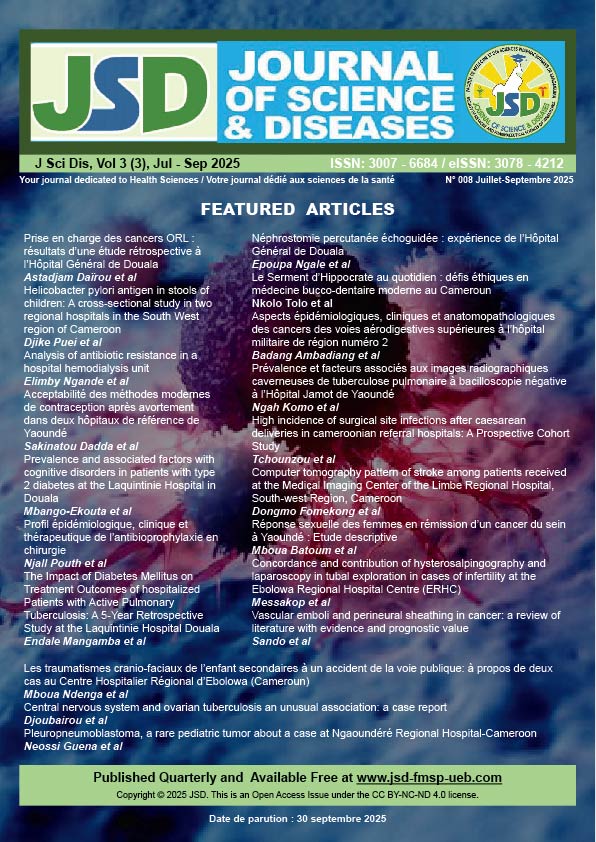Epidemiological, clinical, and therapeutic profile of antibiotic prophylaxis in surgery
DOI:
https://doi.org/10.64294/jsd.v3i3.132Keywords:
surgical antibiotic prophylaxis, epidemiological profile, clinical profile, therapyAbstract
Objective: This study aimed to determine the epidemiological, clinical, and therapeutic profile of patients receiving surgical antibiotic prophylaxis.
Methods: We carried out a descriptive cross-sectional study in the Surgery Department of Douala General Hospital (Cameroon) over a six-month period. A total of 331 patients who underwent clean or clean-contaminated procedures were included. Clinical and therapeutic data were collected using a standardized case-report form and analyzed with R and GraphPad for Windows. One-way analysis of variance and Student’s t-test were applied for comparisons (95 % CI, α = 0.05).
Results: The mean patient age was 49.3 ± 11.7 years; most were male (63.7 %) and from urban areas (85 %). The most frequent surgical specialties were orthopedics/traumatology (25.8 %) and otorhinolaryngology (24.5 %). Elective surgery predominated (72.5 %), and antibiotic prophylaxis was prescribed in 83.7% of cases. Ceftriaxone (48.7%) and the amoxicillin/clavulanic acid combination were the main agents used. The intravenous route accounted for 98.6 % of administrations. The mean duration of prophylaxis was eight days in orthopedic surgery and two days in ENT surgery.
Conclusion: Surgical antibiotic prophylaxis is widely practiced, typically administered peri operatively by the intravenous route, with ceftriaxone and amoxicillin/clavulanic acid being the predominant antibiotics.



